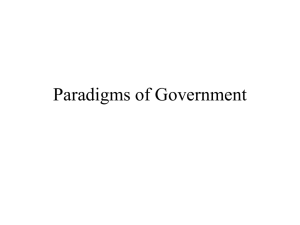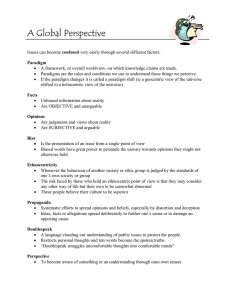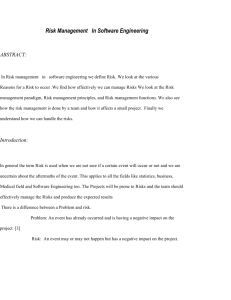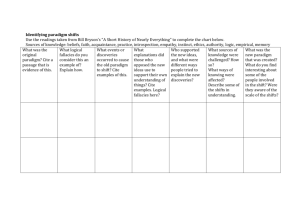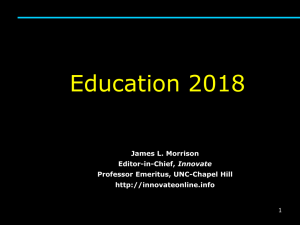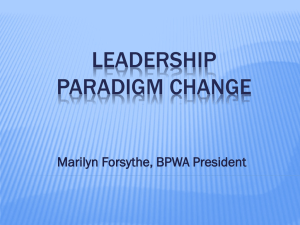Change Management
advertisement
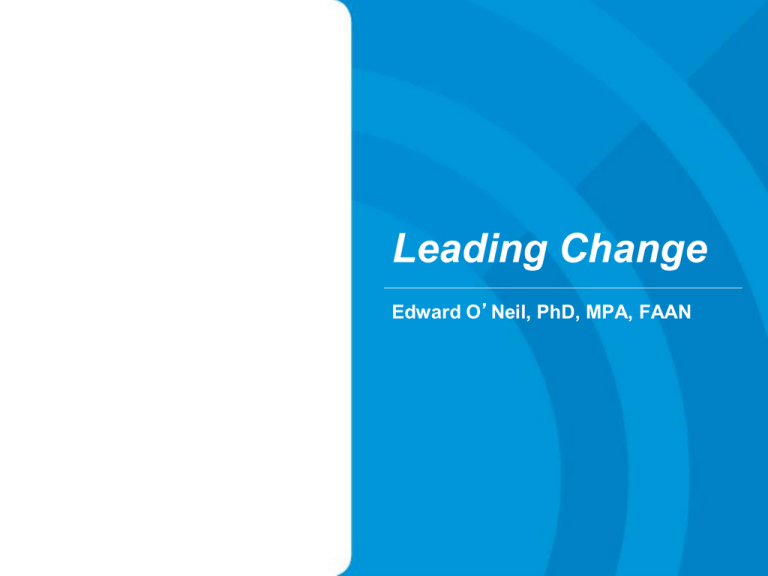
Leading Change Edward O’Neil, PhD, MPA, FAAN How we wish we could lead change… 3 How it really is… Change 5 Leadership or Management? L = Vision + Task + Relationship Interdependence Change Means Leadership • • • • • • • • • • Stable Complicated The Best Policy Management Diversity Unfolding Complex The Good Politics Leadership Status Quo: Paradigms 80 70 60 Productivity • Effective tools • Make things work • Provide coherence • Eventually, limit what we think we can do • Eventually stops working 50 40 30 20 10 0 Inputs 8 The Paradigm and Benefits of the SQ Health Care has provided: •Worthy, fulfilling work •Social meaning •High social status •Prestige •Independence •Good Incomes And, at its very heart, Meaning, Self-definition and Identity We’ve been at this for awhile 10 Add These Numbers Add These Numbers 1000 Add These Numbers 1000 40 Add These Numbers 1000 40 1000 Add These Numbers 1000 40 1000 30 Add These Numbers 1000 40 1000 30 1000 Add These Numbers 1000 40 1000 30 1000 20 17 Add These Numbers 1000 40 1000 30 1000 20 1000 18 Add These Numbers 1000 40 1000 30 1000 20 1000 10 19 Add These Numbers 1000 40 1000 30 1000 20 = 4100 1000 10 20 Rosa’s Big Change Change Leadership Check List Awareness Self Others Alignment Culture Strategies Action Small steps Participation Communication Coherence Inspiration Direction Change Change = A * B * C > Benefits of Status Quo How do we break out of the paradigm? Breaking the paradigm •Fear • Lust Changing Individuals • Articulate the disruptions • Reaffirm what your status quo was built to do • Involve them in creating a vision of the new • Understand how they see the nee Your Ideas vs. Their Anxiety •To work, it has to be about what they love… 27 Committed Core • Get it – Feeling – Understanding • See their success • Identify with the change • Committed to you Working with Committed Core • Working with the Core * Ensure their ongoing engagement by checking in. * Focus their work on particular achievable improvement- their leadership, practice and larger issues. * Get them to understand and tell the stories of their transition. Muddled Middle • Uncertain • Conflicted • Uneven • Some pain; but no real new direction Working with the Middle Working with the Middle *Segment and actively develop each group or individual. *Repeat tales of success- patients, financial, work-life of the committed core. *Pair those ready to change with mentors who connect to them. *Have them assist with larger undertakings. *Provide new skills, but “just in time”. *Teach them how to solve problems in the new paradigm. Distant Detractors • Don’t see value • Deeply attached to SQ • Do not see themselves in the future • Judgmental • Faithful to the “true cause” Working with Detractors • • • • Ask questions to understand; not convince Decide who is essential Develop individual plans for each Remember • Emotion • How they see it • Investing your time • Do not ignore attacks • Digital wisdom Change Strategy: From a Pro “There is nothing more difficult to carry out, nor more doubtful of success, nor more dangerous to handle, than to initiate a new order of things.” Machiavelli, The Prince, 1513 Change Strategy: From a Pro • • • • Broad Adaptive Other Directed Purposeful

